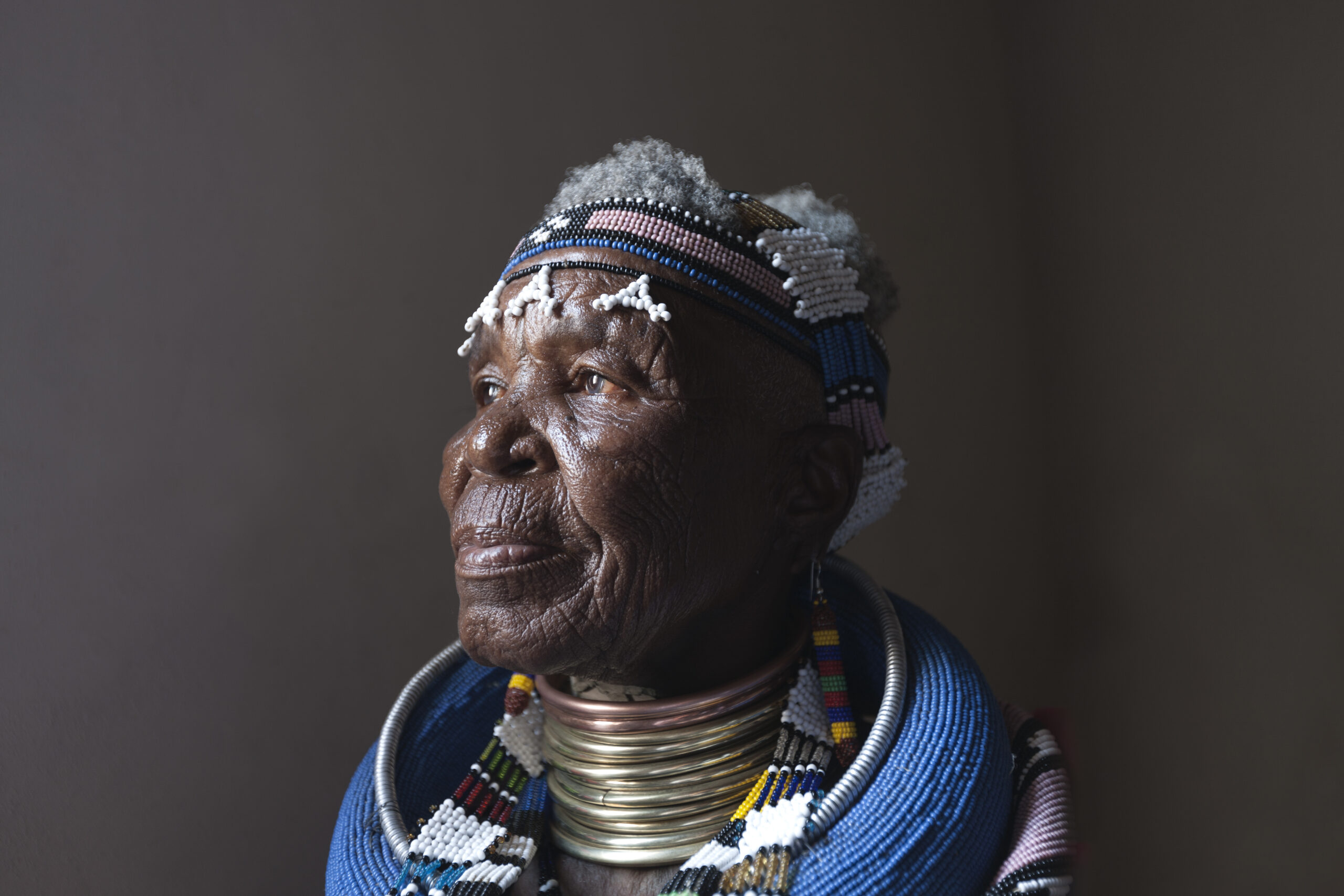
“Abo Gogo gade ba gwala na bo Mma gade ba gwala” — she observed her grandmother and mother write patterns, the same way I observed my own grandmother make beads. Though neither me nor my grandmother have been embraced by the world’s most renowned museums, rubbed shoulders with John Legend over a Belvedere campaign or have a Rolls-Royce phantom — like The Mahlangu phantom — named after us.

When her grandmother and mother took a break in the shade, Mama Esther would find a spot and try her hand in the scorching sun, only on the walls at the back. When they resumed, she ran away, afraid she had made a mess. You’ve got it, they said.
On my first visit home this year, I asked my grandma on her stoep, for the first time, where and why she had learnt to make all those beautiful and colourful artefacts that I also learnt to make from watching her. My grand sister-in-law taught her to make pottery, brooms, beads and mats — because as a woman, she needed to learn to fend for herself and for her children. When she eventually left my grandfather, she had relied on the creative work of her hands that she sold in markets introduced to her by other women who were independent and wanted the same for her.
In Black Womanhood: Images, Icons, and Ideologies of the African body (2008) Ifi Amadiume, the author of Male Daughters and Female Husbands (1987), writes that “the critical gaze of Neo-Christian crusaders” obliterated the role and contributions of women in African societies as sacred, by creating a system that excluded women from making art, and established a culture that produced art for and by men, even when it concerned women.
A tourist from France, visiting past her homestead, was browsing the patterns on the wall and noticed Esther’s pattern. The Frenchman looked for her. She had left home in 1990 for a residence at Botshabelo museum and living village where she used to write patterns on the wall. Upon finding her, he invited her to come and paint at The Magicians of The World festival in 1989. She painted a replica of her house in front of hundreds. She is the first woman and first African artist to join the likes of Andy Warhol and Frank Stella and become one of a handful of artists in the world to paint the BMW art car in 1991.
From working with clothing labels to brands like Vaseline, Tastic, Belvedere, Dr Esther Mahlangu has brought traditional Ndebele geometric art to contemporary modern inventions like canvas, sculpture, ceramics, cars and even aeroplanes — demonstrating her timelessness and the adaptability of her artistry.
Although the ancient artform used limestone whitewash with natural pigments like brown, black and ochre from the earth. Store-bought paints have a variety of colour and are convenient to travel with. She uses paint to make lines on her pattern with a chicken feather. From the feather-painted neat lines, she has re-established African art by African women on the world stage.
Hers is a triumphant story of Ndebele women who have always been revered for neatly painting complex geometric patterns in their homes, as a statement to the world about the creative power and the boldness of their genius. By being true to herself, her traditions and continually expressing her creative prowess, despite what Ifi Amadiume calls “forces that attempt to block access to women’s freedom of expression”, she has become a contemporary feminist icon and antithesis of colonialism.
Hers is an ascension too, for my grandmother and her sister-in-law who taught her how to make art, it is an ascension too of Esther’s grandmother and mother too, and all the other black women who made art with their hands but never had the opportunity to be remembered and celebrated for their artistry. Her geometric lines seem to almost possess secrets about our own African beauty.
My celebration of Mama Esther is a celebration of the creative power of black womanhood. In her abstract, bold work, we find hidden secrets about the beauty and boldness of our heritage. We, too, learn to adapt ourselves and our traditions with the rigour and honesty that she has pioneered with her delicate and precise lines. And like her, may we wear our heritage like a breastplate of honour into every room we enter.
This article first appeared in Jack Journal 2020: Volume 2.
Photographs by Photography by Clint Strydom and Melrose Gallery.
